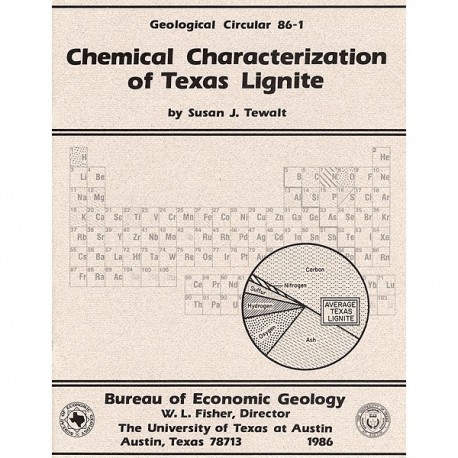Geological Circulars
-
Books & Reports
- Reports of Investigations
- Guidebooks
- Udden Series
- Geological Circulars
- Down To Earth
- Atlases of Major Oil and Gas Reservoirs
- Texas Memorial Museum Publications
- Environmental Geologic Atlas of the Texas Coastal Zone
- Mineral Resource Circulars
- Other Reports
- Seminars and Workshops
- Handbooks
- Submerged Lands of Texas
- Symposia
- Annual Reports
- Open File Reports
-
Maps & Cross Sections
- Thematic Maps
- Miscellaneous Maps, Charts & Sections
- Geologic Atlas of Texas
- STATEMAP Project Maps
- Geologic Quadrangle Maps
- Cross Sections
- Highway Geology Map
- Energy and Mineral Resource Maps
- Shoreline Change and Other Posters
- Wilcox Group, East Texas, Geological / Hydrological Folios
- Bouguer Gravity Atlas of Texas
- River Basin Regional Studies
- Featured Maps
- Posters
- Teachers & the Public
-
Geological Society Publications
- Gulf Coast Association of Geological Societies
- Alabama Geological Society
- Austin Geological Society
- Corpus Christi Geological Society
- Houston Geological Society
- Lafayette Geological Society
- Mississippi Geological Society
- New Orleans Geological Society
- South Texas Geological Society
- GCS SEPM Publications
- Historic BEG & UT Series
GC8601. Chemical Characterization of Texas Lignite, by S. J. Tewalt. 54 p., 21 figs., 22 tables, 2 appendices, 1986. ISSN: 0082-3309. Print.
To purchase this publication as a PDF download, please order GC8601D.
ABSTRACT
Statistical analysis of chemical data on Texas Eocene coals revealed stratigraphic and geographic trends in lignite quality. Chemical data on near-surface coals were obtained from various private and public sources. Seams from deep-basin Wilcox Group cores were sampled, and the chemical characteristics of near-surface and deep-basin coals were compared. Wilcox coals are the best for combustion processes, Yegua coals are intermediate, and Jackson coals are the poorest. Wilcox Group coals, in the Sabine Uplift particularly, are borderline lignite A to subbituminous C in rank in both the near surface and the deep basin. Jackson Group coals are lignite A in the near surface.
Examination of ash-oxide data revealed high variability within Wilcox and Jackson Group coals in East Texas. The Jackson Group in South Texas, however, has a distinctive ash chemistry, suggesting possible volcanogenic sources for some of the ash. Ash chemistry should pose no serious constraints on utilization of Jackson lignite, although some ashes are high in Na2O. In the deep-basin cores, Na2O content increases with seam depth, coincident with increase of Na+ in ground water.
Average trace element concentrations in Texas coals are similar to those in other U.S lignites on a whole-coal basis. Most trace elements exhibit highly skewed frequency distributions with few large values. Locally high selenium or arsenic contents may cause deleterious environmental effects; uranium contents are low in seams likely to be utilized. Trace element data on deep-basin coals suggest inorganic associations for fluorine, chromium, copper, vanadium, and uranium.
Near-surface and deep-basin seams in Texas are similar in quality, although deep-basin seams are represented by few data. Quality disparity is greatest between deep-basin and near-surface seams in the Sabine Uplift area, mainly because of lower ash contents in the deep seams.
Keywords: lignite, Texas, chemical composition, coal, trace elements, Wilcox Group, Jackson Group, Yegua Formation, statistical analysis
Citation
Tewalt, S. J., 1986, Chemical Characterization of Texas Lignite: The University of Texas at Austin, Bureau of Economic Geology, Geological Circular 86-1, 54 p.


